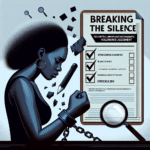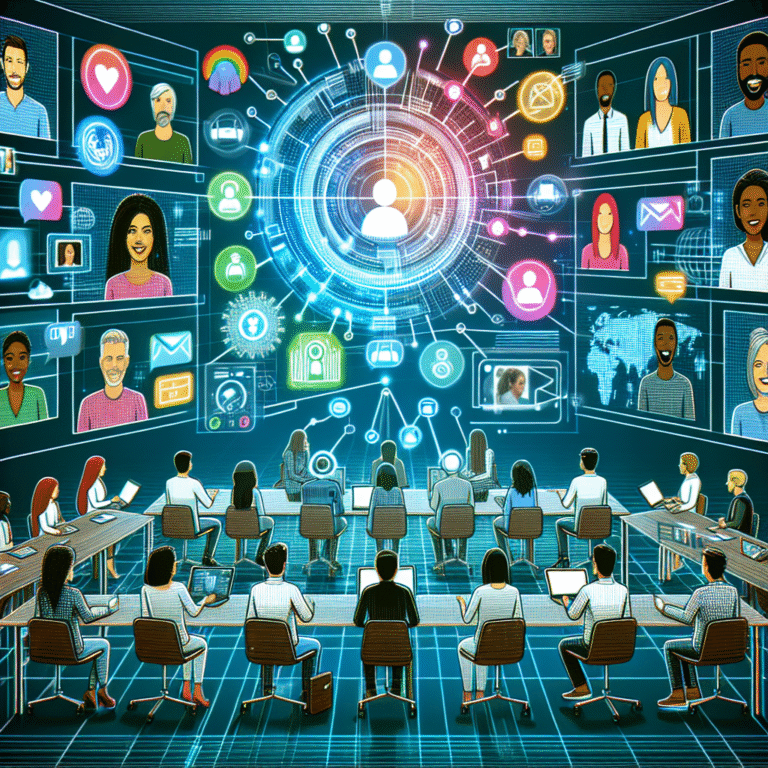
Introduction
In a world where influence shapes societies, economies, and cultures, the intricate interplay of gender and power remains one of the most pivotal yet contentious arenas of discussion. The phrase "Gender and Power: Unpacking the Dynamics of Influence and Authority" invites us to delve deep into the ways in which gender informs, challenges, and redefines power structures. The relevance of this topic has only escalated over the past few decades, urging scholars, activists, and everyday individuals to examine not just who holds power, but how gender informs that power.
From boardrooms to political arenas and social movements, understanding the dynamics of gender in relation to power is not just an academic exercise—it’s essential for fostering equity and justice in our societies. As we explore these dynamics, we will uncover how influence and authority manifest differently across genders and the mechanisms that perpetuate or challenge these disparities.
Understanding Gender and Power
Theoretical Frameworks
To unpack the complex relationship between gender and power, we can draw on various theoretical perspectives:
Patriarchy: A system where men hold primary power and predominate in roles of political leadership, moral authority, and control of property. Patriarchal structures have dominated human societies for centuries, manifesting in both explicit and insidious ways.
Feminist Theory: Feminist scholars argue that gender inequality is rooted in social constructions rather than biological differences. This perspective explores how traditional notions of masculinity and femininity influence power dynamics.
- Intersectionality: Coined by Kimberlé Crenshaw, the intersectionality framework allows us to examine how various social identities—such as race, class, sexuality, and gender—interact to create unique modes of discrimination and privilege.
Case Studies in Gender and Power
The Representation of Women in Leadership: In 2020, women held only 28% of senior management roles globally, indicating a significant gender gap. Organizations like McKinsey & Company have published annual reports highlighting the need for initiatives to support women’s advancement in leadership roles.
Analysis: This case study reveals the systemic barriers women face in achieving comparable positions of authority, emphasizing the impact of organizational culture and policies on gender parity.
The #MeToo Movement: This social movement underscored abuses of power through a gendered lens, bringing attention to the prevalent issues of sexual harassment and assault. Initially emerging from Hollywood, the movement quickly transcended industries, leading to changes in workplace policies and public discussions surrounding consent and power.
Analysis: The #MeToo Movement exemplifies how collective action can challenge patriarchal systems and shift conversations about personal agency and authority in the workplace.
The Importance of Representation
Gender representation in leadership roles is not merely a matter of fairness; it significantly affects decision-making and governance. Research indicates that organizations with higher female representation tend to perform better financially and possess a more holistic understanding of diverse customer needs.
Table 1: Gender Representation in Fortune 500 Companies (2021)
| Category | Percentage of Women |
|---|---|
| CEO Positions | 8% |
| Board Membership | 30% |
| Senior Management Roles | 28% |
The Role of Education
Educational attainment is directly linked to power dynamics. Studies suggest that levels of education among women correlate positively with their ability to attain leadership roles. Empowering women through education can thus reframe traditional power structures.
Gender and Power in the Workplace
Unpacking Workplace Dynamics
The workplace is often seen as a microcosm of society, and it’s here that gender and power dynamics reveal themselves starkly. Systemic biases, stereotypes, and corporate cultures can all undermine women’s authority.
The Glass Ceiling: Despite advancements, women often hit a "glass ceiling" that restricts their progression to the upper echelons of corporate governance. This invisible barrier is compounded by a lack of mentorship opportunities compared to their male counterparts.
- The Double Bind: Women in leadership often face a double-bind dilemma, wherein they are criticized for being too aggressive or too passive. This precarious balancing act can dramatically affect their career trajectories.
Case Study: The Corporate World Adjusts
A 2019 study from Catalyst examined policies at companies that champion women’s initiatives. Organizations that implemented mentorship programs and family-friendly policies showed a notable increase in women’s retention and promotion rates.
Analysis: This case study highlights the tangible benefits of organizations recognizing the gender-power dynamic and actively working to create more equitable environments.
The Impact of Technology
As the digital age advances, technology serves both as a tool for empowerment and a battleground for equality. Social media platforms have given rise to new forms of advocacy and activism but also facilitate harassment and discrimination.
Chart 1: Impact of Online Platforms on Gender Activism
| Platform | Level of Engagement | Examples of Activism |
|---|---|---|
| High | #MeToo, #GenderEquality | |
| Medium | Awareness Campaigns | |
| Low | Professional Networking |
With these insights, we see that technology can be wielded to amplify voices or reinforce existing power imbalances.
Global Perspectives on Gender and Power
Women in Politics
Globally, women’s political representation remains alarmingly low. According to the Inter-Parliamentary Union, women held only 25% of parliamentary seats worldwide in 2020. However, several countries have made significant strides in increasing female political representation through quotas and policy reforms.
Rwanda: Following the genocide in 1994, Rwanda implemented gender quotas, resulting in women comprising over 60% of the national parliament.
Analysis: Rwanda’s case indicates that legislative changes can radically transform gender representation in politics, offering a potential blueprint for other nations.
Economic Empowerment
Women’s economic participation influences not only their status but also that of their families and communities. Research from the World Economic Forum suggests that narrowing the gender pay gap could increase global GDP by several trillion dollars.
Microfinance Initiatives: Programs that provide microloans to women have seen substantial success in economic development, leading to increased autonomy and decision-making power.
Analysis: Economic empowerment serves as a vehicle for broader societal change, compelling us to consider women’s economic contributions as critical to national prosperity.
Conclusion
The discourse surrounding gender and power is ever-evolving, echoing through our social institutions, workplaces, and cultural narratives. As we dissect and analyze the intricacies of influence and authority, it becomes evident that understanding these dynamics is not merely an academic pursuit but a necessitated response to maintaining social justice.
In summary, empowering women—whether in corporate boardrooms, political spheres, or societal spaces—stands as an absolute imperative for advancing equality. By championing policies that promote gender representation, supporting education, and fostering inclusivity, we can collectively dismantle the traditional power hierarchies that persist in our societies.
Let us remember that while the road towards equitable power dynamics is fraught with challenges, every step taken in raising awareness and advocating for change contributes to a more balanced and just world.
FAQs
1. What is the ‘glass ceiling’ phenomenon?
The glass ceiling is an invisible barrier that prevents women and other minority groups from rising to the highest tiers of their professions, despite their qualifications.
2. How does intersectionality affect gender and power?
Intersectionality examines how various social identities—a person’s race, class, gender, etc.—interact to create unique experiences of disadvantage or privilege, particularly in contexts of power.
3. Why is female representation in leadership roles important?
Women in leadership positions can lead to more diverse perspectives and decision-making processes, contributing to better organizational performance and cultural inclusivity.
4. What role does education play in gender empowerment?
Education is crucial for empowering women, as it equips them with knowledge, skills, and confidence needed to navigate power structures and pursue leadership roles.
5. How can organizations promote gender equity?
Organizations can promote gender equity by implementing mentorship programs, flexible work policies, and conducting regular assessments of gender disparities within their structures.
In exploring gender and power through the lens of influence and authority, we not only reveal the existing disparities but also highlight the potential pathways towards a more equitable future.

















